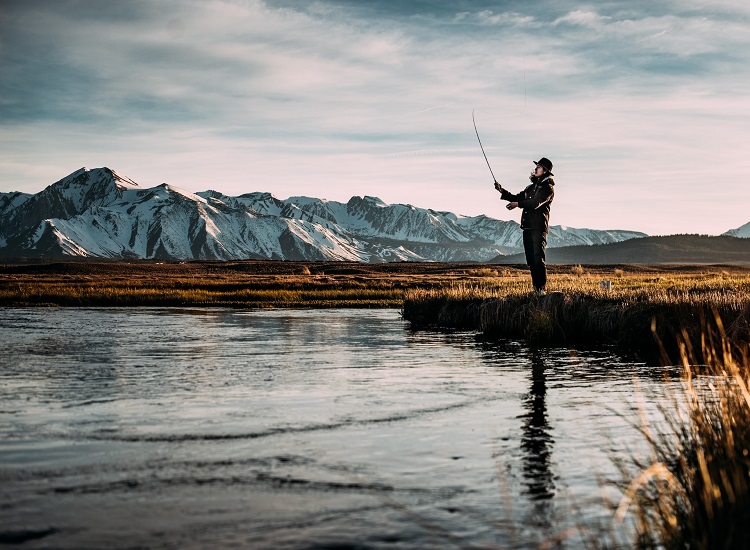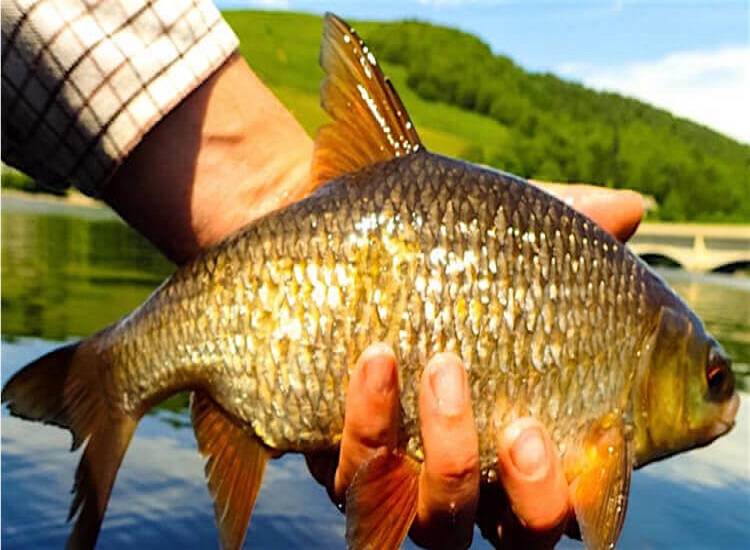Fly fishing is a unique and rewarding experience that requires skill, patience, and the right gear. One of the most important pieces of equipment for fly fishing is the reel. It’s what allows you to cast your line far out into the water and then reel it back in when you’ve caught something. But with so many different types of reels on the market today, how do you know which one to choose? In this ultimate guide to fly fishing reels, we’ll cover everything you need to know about these essential tools so that you can find the perfect one for your needs!
What are fly fishing reels?
A fly fishing reel is a cylindrical device that attaches to the end of your fly rod. It holds the line, backing, and leader as you fish. When you cast your line out into the water, the reel allows it to flow freely off its spool.
Unlike other types of reels, fly fishing reels don’t have a mechanical drag system. Instead, they rely on their weight and design to create friction against the spool when fish pull on the line.
Most fly fishing reels are made from lightweight materials like aluminum or graphite. They come in different sizes and capacities depending on what type of fish you’re targeting and where you’ll be fishing.
Fly fishing reels can be either single action or multiplier (also known as automatic) reels. Single-action models require one turn of the handle for each rotation of the spool while multiplier models use gears to increase retrieval speed.
The right choice depends on your experience level as well as where and how often you plan to fish. No matter which type you choose, a good-quality fly fishing reel will make all your outings more enjoyable!
Types of fly fishing reels
When it comes to fly fishing reels, there are three main types: single action, multiplying, and automatic.
Single action reels are the most traditional type of fly reel and have a simple design with basic mechanics. They utilize a one-to-one gear ratio which means that for every turn of the handle, the spool rotates once. This makes them ideal for beginners because they are easy to use.
Multiplying reels have more complex mechanics than single action reels. They feature gears that increase the speed of line retrieval by allowing multiple revolutions of the spool per turn of the handle. Multiplying reels can be either direct drive or anti-reverse models.
Automatic reels offer an even faster line retrieval rate than multiplying reels thanks to their spring-loaded mechanism which retrieves line quickly when pressure is released from a button on the reel’s exterior.
Each type has its own pros and cons depending on your preference and skill level as an angler. It’s important to consider what kind of fishing you’ll be doing before choosing a reel so you can select one that will work best for your needs!
What is the difference between a spinning reel and a baitcaster reel?
When it comes to fishing reels, one of the most common questions is “What’s the difference between a spinning reel and a baitcaster reel?” The answer lies in their design.
Spinning reels are more popular among beginners because they’re easy to use. The spool of line rotates parallel to the rod, which allows for better control when casting lighter lures. Spinning reels also have an open face design, which makes them less prone to tangles.
On the other hand, baitcasting reels are ideal for experienced fishermen who want greater accuracy and power when casting larger lures. Instead of rotating parallel to the rod like spinning reels do, baitcasters rotate perpendicular. This allows anglers to create longer casts with heavier lines and tackle.
However, baitcasting reels require a bit more finesse than spinning reels because there’s a higher risk of backlash if you don’t properly adjust your drag settings or thumb pressure during casting. Baitcasters are also more expensive than spinning reels due to their complex construction.
Ultimately, choosing between these two types of fishing reels depends on what kind of fish you plan on catching and your level of experience as an angler.
What are the benefits of using a fly fishing reel?
When it comes to fly fishing, using a proper reel is crucial. Not only does a fly fishing reel store and release your line, but it also provides several benefits.
One of the key benefits of using a fly fishing reel is that it helps you cast further with less effort. Unlike traditional spin-casting reels where the weight of the lure pulls out the line, in fly fishing, the angler must use their own power to create momentum for casting. A good quality reel can help increase this momentum by adding extra weight to your rod.
Another advantage of having a reliable fly fishing reel is its ability to control and manipulate your line when fighting fish. If you hook onto a large fish, they may take off with your line at an alarming speed. With a quality drag system on your reel, you can smoothly reduce or increase pressure on the line as required during these moments.
In addition to these performance-based benefits, owning a good-quality fly fishing reel also adds durability and longevity to your equipment collection. Quality reels are made from high-grade materials which resist corrosion and wear over time while providing smooth operation.
Investing in a high-quality fly-fishing reel isn’t just about making sure that you have all necessary gear for successful catches; it’s about ensuring better performance, control and enjoyment from every trip out on the water!
How to choose the right fly fishing reel for you?
Choosing the right fly fishing reel can be a daunting task, especially for beginners. But no need to worry because we’ve got you covered with these tips on how to choose the right one for you.
First and foremost, consider your budget. The price range of fly fishing reels varies widely from $30 up to over $1,000. Determine how much you’re willing to spend before making any decisions.
Next, think about the type of fish species you’ll be targeting and where you’ll be fishing. Different types of fish require different line weights and reel sizes. For example, if you plan on catching large saltwater fish like tarpon or marlin, then a heavy-duty reel is necessary.
The drag system is also an important factor to consider when choosing a fly fishing reel. A good drag system will help prevent line breakage and provide smooth resistance when reeling in a fish.
Furthermore, pay attention to the weight of the reel itself. If it’s too heavy or unbalanced for your rod, it could cause discomfort during long casting sessions or make it difficult to control your line.
Don’t forget about personal preference in terms of design and brand reputation. Choose a reputable brand that offers quality products with good customer support.
By taking into consideration all these factors – budget, target species and location of fishing spots; drag system; weight balance; design & brand reputation – finding the perfect fly fishing reel for your needs should become less overwhelming!
Different types of line and weights for fly fishing
When it comes to fly fishing, choosing the right line and weight is crucial for a successful day on the water. Fly fishing lines are typically categorized by their weight, which ranges from 0 (the lightest) to 15 (the heaviest). The weight of the line you choose will depend on the type of fish you’re targeting and the conditions in which you’ll be fishing.
For smaller streams or creeks, a lighter weight line (1-3) is often ideal as it allows for delicate presentations without spooking wary trout. For larger rivers or lakes where longer casts are necessary, heavier weights (4-8) may be needed to handle bigger flies and stronger currents.
In addition to weight, there are also different types of fly fishing lines available including floating lines, sinking lines, sink-tip lines and intermediate sinking lines. Floating lines are versatile and great for most situations while sinking lines can help get your fly down deeper in fast-moving water.
It’s important to match your line choice with your rod as well – using a heavy line on a lightweight rod can result in poor casting performance. Take some time to experiment with different combinations until you find what works best for your style of fishing.
Conclusion
Fly fishing reels are an essential piece of equipment for any angler looking to master the art of fly fishing. With so many different types and styles available on the market, it can be challenging to know which one is right for you.
When selecting a fly fishing reel, consider your skill level as well as the type of fish you intend to catch and the size of the body of water you’ll be fishing in. Remember that a high-quality reel will not only improve your casting accuracy but also increase your chances of landing that trophy catch.
By understanding the various types and benefits of fly fishing reels available today, making an informed decision when purchasing one becomes much easier. So go ahead and explore all your options before settling on one – happy fishing!





